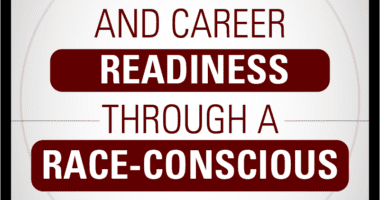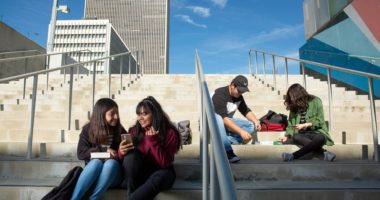Youth Participatory Action Research (YPAR) as a Means to College and Career Readiness
Imagine how schools might be different if educators co-crafted their content, policies, procedures, and expectations with the young people they teach. Critical pedagogy centers those who are experiencing a problem as experts on developing a solution — essentially creating a collaboration between those impacted by a problem and those with the power to change the policies perpetuating it.
Youth Participatory Action Research (YPAR) is grounded in critical pedagogy and gives youth an opportunity to research a problem that’s affecting them in schools and have a say in addressing it. The impact on college and career readiness is two-fold: Youth develop agency, critical thinking skills, and tools to advocate for themselves, skills they’ll need as they transition to various postsecondary options. Educators, meanwhile, get input and solutions firsthand from students facing barriers to accessing educational opportunities, which can, in turn, also help expand access to postsecondary options.
As a school counselor, I facilitated a YPAR project in which a small group of middle school girls reviewed standardized testing data to better understand what is driving the discrepancies in performance between Latina and White females. I gave them a chart that compared course enrollment and performance in each course. They brainstormed hypotheses that might explain the disparities.
The students took photos documenting their school experiences and explored the following questions through their research:
- How do Latino families’ beliefs about college support their children’s success in school?
- How does self-confidence affect Latinas’ involvement in math and science classes?
- How does stress affect the ways in which Latina students engage in school?
The girls and I met weekly to review each student’s photographs while they described what was happening in them. In the end, the students identified three factors — based on their own school experiences — that were contributing to these disparities and presented their findings:
- Teachers expect students to use different strategies to stay organized, making it confusing for students to keep track of things across different classes
- The school is not adequately preparing them for what to expect in college
- The school does not consider how students’ responsibilities and lives outside of school can affect their academic performance or college and career goals
The students presented the solutions they’d devised to administrators, university representatives, parents, statehouse representatives, and community members. While senior leaders did not make systemic changes after this project, another YPAR project that I facilitated in this school prompted the administration to translate correspondence to families into languages other than English, coordinate a Hispanic Heritage celebration, and utilize district resources to hire interpreters for conferences with caregivers.
School counselors’ expertise in group facilitation and focus on college and career readiness make them particularly well-equipped to use YPAR. This approach can support school counselors’ interventions with students and help them advocate for students and their families in a way that directly aligns with students’ needs. While few studies have specifically focused on how participation in YPAR impacts college and career readiness, some studies suggest that students can develop vocational skills and a deeper understanding about the structure of higher education through the YPAR process. YPAR is flexible and can be tailored to students’ interests. Groups have used hip hop, photographs, and traditional PowerPoint presentations to share findings.
After their experience with YPAR, students reported higher self-efficacy in math and science as well as a greater interest in going to college. Participants said they felt more confident in their ability to advocate for themselves and more comfortable speaking to adults about their needs. Teachers, for their part, began looking at ways to build time into the school day for students to finish assignments and align organization strategies. Teachers also changed their thinking on these issues — shifting their focus from what students should be doing to fix these problems to what teachers could do to help students.
Using a student-centered approach to developing content, policies, procedures, and expectations can be utilized throughout the school building. Here are a few considerations for school counselors and educators who are thinking about using YPAR:
- Treat students as the experts. Remember that your role is to guide students in conducting their research and help them learn to publicly disseminate and articulate their findings.
- Offer students an incentive. You can’t pay them, but you can incentive them in other ways. I offered to take students on field trips to universities, give them polo shirts and food!
- Invite policymakers, decision-makers, and others with the power to create change to listen to your students. Regardless of how your group chooses to present its findings, make sure the people who can effect lasting change are in the room.
As educators incorporate race-conscious interventions, it’s important to recognize that the U.S. educational system sets some students up to succeed and others to fail. YPAR is a culturally sustaining approach that not only helps students learn skills that will give them access to various postsecondary options, but also gives educators an opportunity to understand students’ lived experience and insight on ways to dismantle racist structures in education.
Natalie Edirmanasinghe, Ph.D., is an assistant professor of counseling and human services at Old Dominion University.



